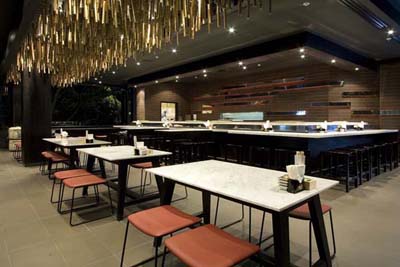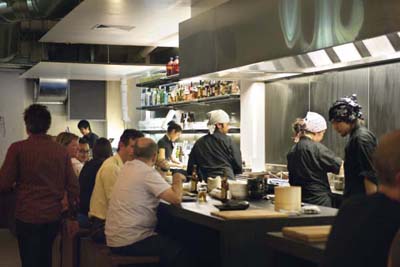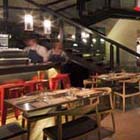Restaurant Layout - Follow These Simple Design Rules To Make Your Business A Success
 Through strategic use of design, we can in fact make a valuable contribution to a business' success. Some clients like to be 'hands on' during the design process, or even design their own restaurant layout and decor; some restaurateurs may be in the process of starting their first venture and perhaps cannot attract or afford an experienced designer; others meanwhile may be operating in those tricky regions where designers are few or far between, or even non-existent. Through strategic use of design, we can in fact make a valuable contribution to a business' success. Some clients like to be 'hands on' during the design process, or even design their own restaurant layout and decor; some restaurateurs may be in the process of starting their first venture and perhaps cannot attract or afford an experienced designer; others meanwhile may be operating in those tricky regions where designers are few or far between, or even non-existent.
I hope these tips regarding space planning will help if you happen to be working in any of these circumstances.
Be space savvy
Good space planning is essential to success - and I do not mean squeezing in as many covers as possible.
All trained designers have been taught that form should follow function. Put into practice, this means that although it is crucial for a restaurant to be attractive in appearance, it will soon lose its allure if service is slow or inefficient as a result of the ill thought-through layout.
For this reason, back-of-house planning is just as vital as front. Your dining room is your salesroom, your kitchen is your factory; everything should be geared towards running the two together as sweetly as possible so that food arrives to the right table, at the right time, at the right temperature, with minimum disturbance to other diners.
When planning the layout, it helps if you consider a restaurant as a production line, in which each stage of the operation is laid out in the correct efficient order.
I frequently come across big mistakes. I recently redesigned a large restaurant in the UK that had been planned and built - for an experienced operator by a big firm of architects - without a dry store or an office.
The order of space planning
I recommend starting planning at the back of house - remember, function followed by form. The first piece of information required is a schedule of food service equipment to be used, including all cooking, preparation and cleaning and storage items. If you are planning to appoint a designer then you should provide this schedule up-front, as part of the design brief. If you have not done this, then it should be the first thing you and your designer work on together after you have decided on your target market and menu. Bear in mind that if you don't consider the menu prior to designing the layout, you'll probably have to start the whole process over once you work out the food offering. It's best to do it once and best to do it right, so here is my order for space planning a new restaurant: - If possible, food deliveries should be made at the back and refuse collected from there as well. Accordingly, the dry, refuse and cold stores should be near the rear exit.
 |
 |
For the sake of good hygiene, the refuse store should be outside or between the preparation room and final rear exit, separated by a fire door and separate ventilation system. Some small sites will only have a front entrance; this is not ideal. In this case, the same principles apply but you may have to schedule deliveries and collections daily before you open. It never creates a good impression when catering-size consignments of food show up during service.
- Next up should come the preparation room. A preparation room normally has no cooking equipment, just preparation benches, sinks, benches, juicers, peelers, dough makers, racks and so on.
- Dry and cold stores may be within the preparation room or between the rear exit and the preparation room, either way will work.
- If you require your own washrooms, it helps to place them near the kitchen, since it will require heavy-duty fume extraction and the toilets can then share the same ventilation duct routes (but not the same ducts) and ceiling voids.
- The next stage is the main kitchen. This will include the heavy cooking equipment like ranges, fryers, grills, griddles, ovens and tandoors. There will also be more tables or benches, a large sink and perhaps fridges or freezers in which prepared food is kept close at hand for cooking off.
- Next comes assembly: once the food has been cooked, the dishes must be assembled and any sauces and so on added. Usually there will be a bench or hot cupboard in the kitchen, between the cooking off area and pass door or hatch, for this purpose.
- Next, the food is taken to the table and served. Once it has been consumed, the process reverses. Dirty plates are returned for cleaning and there should be a 'dirties dump' inside the return point next to a large sink and a line of washing up equipment.
A separate wash-up room is better if there is space.
So that is back of house: if it is planned well, it will run smoothly, require fewer staff and there will be fewer accidents and spillages. Once you have got that right, the dining area, entrance and bar designs will follow naturally and you will have gone a long way to creating a popular restaurant and successful business.
My last piece of advice: plan well in advance on a drawing board or computer. It really is much better than trying to plan in the moment when the builder is waiting to know what to do.
Written by Nigel Witham MCSD MIOD - a writer, designer and photographer and Member of the Chartered Society of Designers (interior and graphic design disciplines).
|
